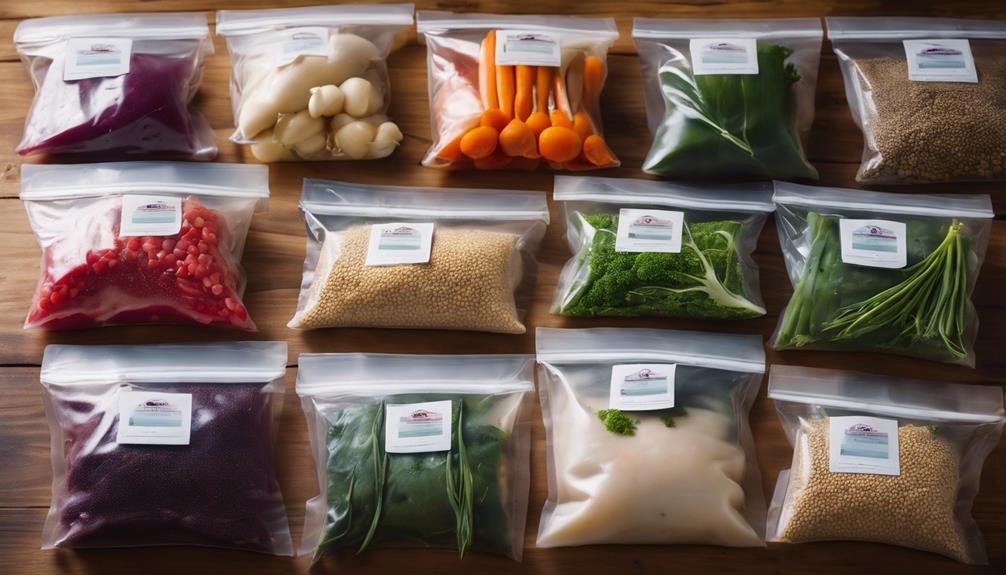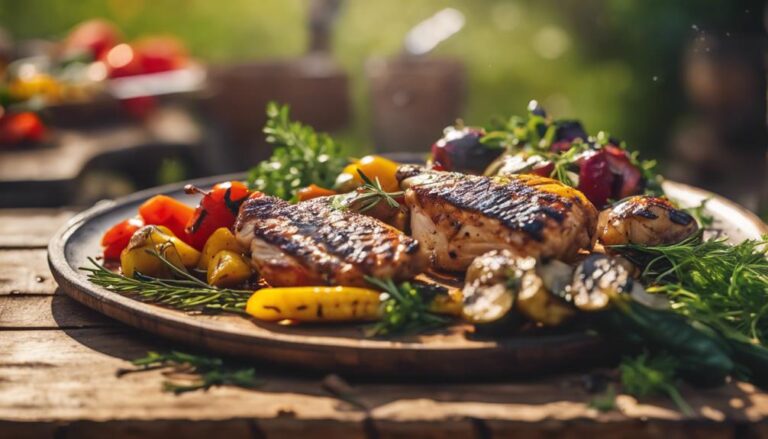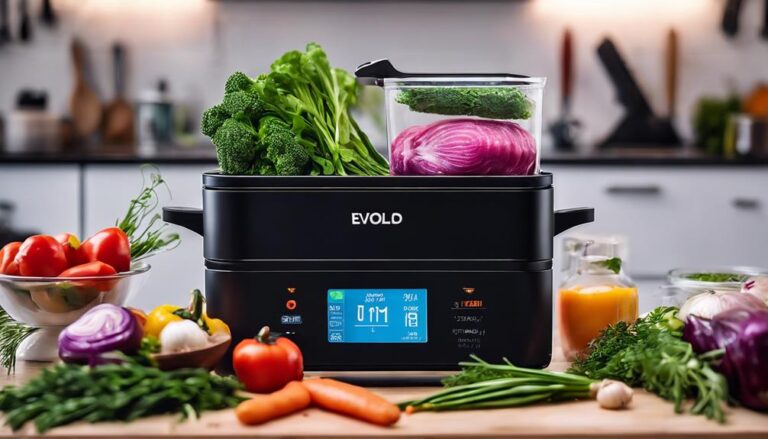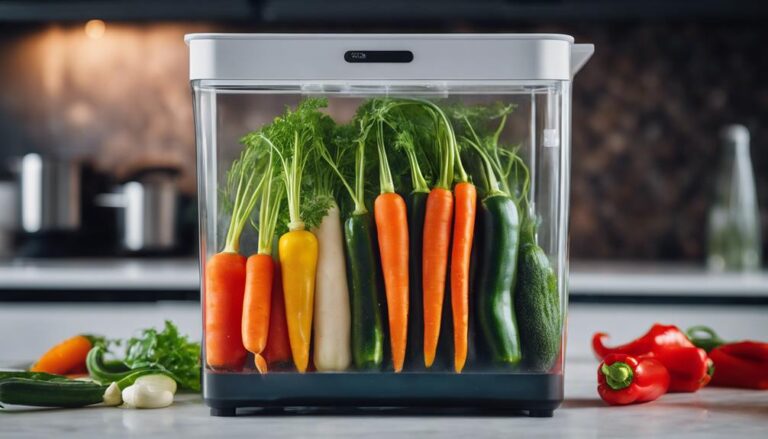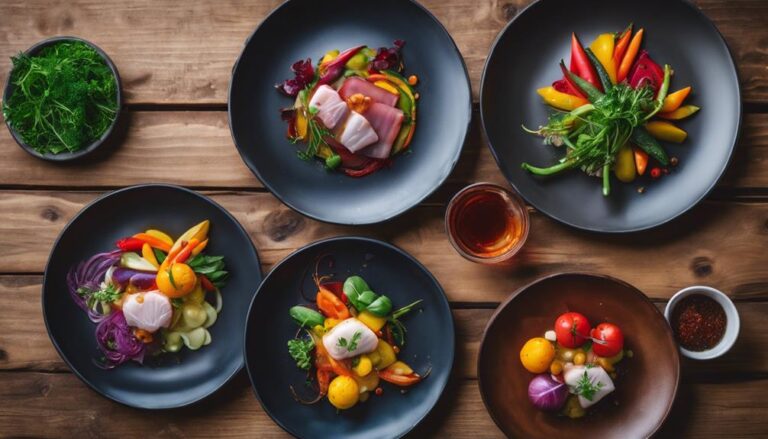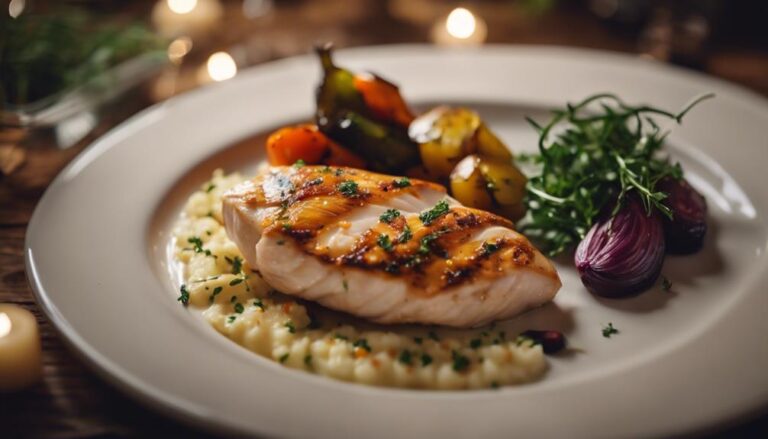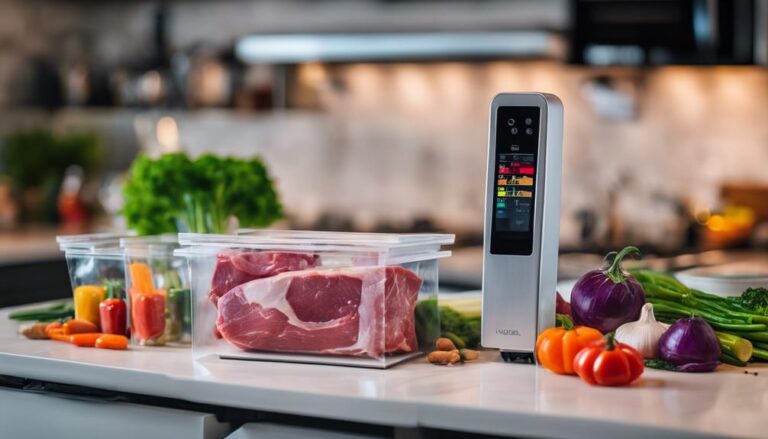Sous Vide Meal Prep for Vegans and Vegetarians
I've found that sous vide meal prep for vegans and vegetarians is both efficient and rewarding. This method involves sealing ingredients in vacuum bags and cooking them in a temperature-controlled water bath. It locks in moisture and enhances flavors without losing nutrients. Cooking vegetables, like carrots or sweet potatoes, at precise temperatures guarantees they remain tender yet vibrant. I recommend planning meals ahead, incorporating a variety of vegetables and plant-based proteins for diversity. Also, marinating tofu can infuse it with rich flavors. If you're curious, there's plenty more to explore in this culinary technique.
What You Will Learn Here
- Sous vide cooking enhances flavors and textures of vegetables and plant-based proteins while preserving their nutritional value.
- Vacuum sealing with herbs and spices allows for effective flavor infusion, creating vibrant and delicious dishes.
- Meal prep strategies such as batch cooking and proper storage maintain freshness and nutritional diversity in vegetarian meals.
- Diverse protein sources, including legumes and nuts, ensure a balanced amino acid intake for a healthy vegan diet.
Understanding Sous Vide Cooking
Sous vide cooking, which involves sealing food in vacuum bags and cooking it in a precise water bath, revolutionizes how I enhance flavors and textures in my vegetarian meals. This method allows me to cook vegetables at specific temperatures, ensuring they achieve ideal tenderness without losing their nutritional value. For instance, many vegetables benefit from being cooked for about 45 minutes at 185°F.
One of the standout features of sous vide is the ability to infuse flavors. By vacuum sealing vegetables with aromatics like herbs and spices, I can create vibrant, flavorful dishes that surprise and delight. This technique opens up a world of possibilities for experimentation with different marinades and flavor combinations, making every meal an opportunity for culinary creativity.
When I explore sous vide recipes, I'm constantly amazed at the depth of flavor I can achieve. The precise cooking process locks in moisture and intensifies the taste of the ingredients.
Benefits for Vegetarians
One of the biggest benefits I've found in sous vide cooking is its ability to enhance the flavors and textures of my vegetarian dishes while preserving their nutritional value. By cooking at precise temperatures, I guarantee that my vegetables and plant-based proteins are evenly cooked, which really makes a difference in the final outcome.
With sous vide recipes, I can infuse flavors more effectively by vacuum sealing ingredients with fresh herbs and spices, resulting in a robust taste profile that elevates my meals.
Another advantage is the way sous vide enhances the texture of gluten-rich seitan. This method makes it more enjoyable, allowing me to explore new culinary possibilities.
Cooking vegetables at lower temperatures helps preserve their color and crunch, making them visually appealing while maximizing their health benefits.
Essential Equipment Needed
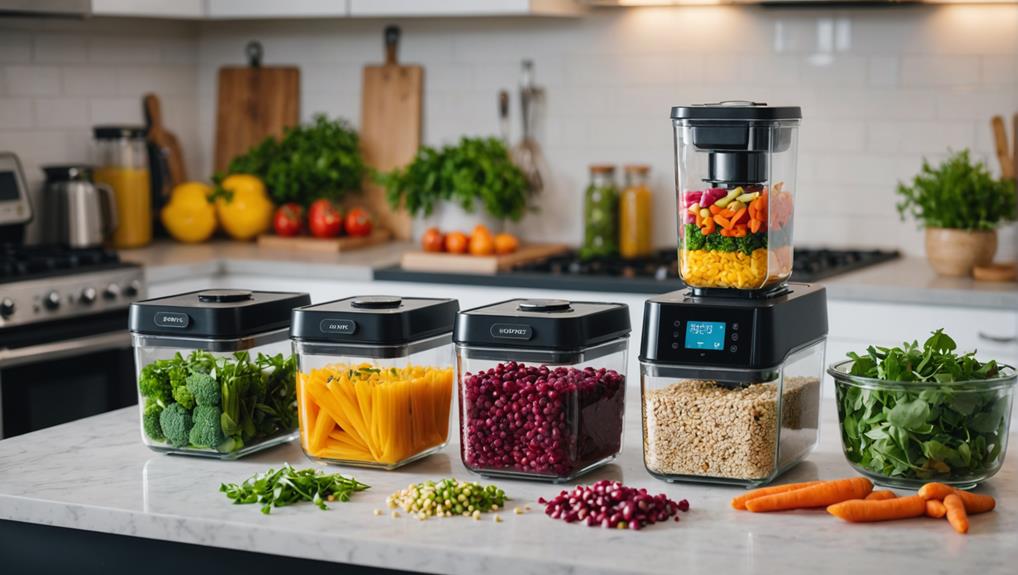
To achieve the best results in sous vide cooking for vegetarians, having the right equipment makes all the difference.
First up, a sous vide precision cooker is necessary. It maintains accurate temperature control, which is critical for consistently great results in your sous vide recipes. Pair it with an immersion circulator to heat and circulate the water, ensuring even cooking throughout your dishes.
Next, you'll need vacuum sealers or reusable silicone bags. Properly sealing your food keeps water out during the process, which is essential for successful sous vide cooking. A large pot or container is also required to hold the water bath. Make sure it has enough capacity to accommodate your food and allow for ideal water circulation.
Lastly, a digital thermometer can be a game changer. It helps verify the internal temperatures of your vegetarian ingredients, adding an extra layer of precision to your cooking.
With these necessary tools at your disposal, you can explore a world of innovative sous vide recipes that will elevate your vegetarian meal prep. Getting the right gear is your first step toward culinary excellence in sous vide cooking!
Flavorful Sous Vide Recipes
Exploring flavorful sous vide recipes opens up a world of delicious possibilities for vegans and vegetarians. The sous vide technique allows us to infuse vibrant flavors into our dishes by vacuum sealing ingredients with herbs and spices. This method not only enhances taste but also preserves the nutrients and textures of our favorite vegetables.
Here are a few standout recipes I love:
- Garlic Confit: Slow-cooked garlic cloves that become creamy and perfect for spreading or using in sauces.
- Sous Vide Glazed Carrots: Carrots cooked to tender perfection, glazed with maple syrup and fresh herbs for a sweet, savory treat.
When I cook vegetables like sweet potatoes or carrots at precise temperatures, such as 180°F, I achieve peak flavor without the risk of overcooking.
For protein-rich options, marinating Sous Vide Tofu for at least four hours yields a well-seasoned dish.
With these flavorful sous vide recipes, meal prep becomes a delightful culinary adventure!
Meal Prep Strategies
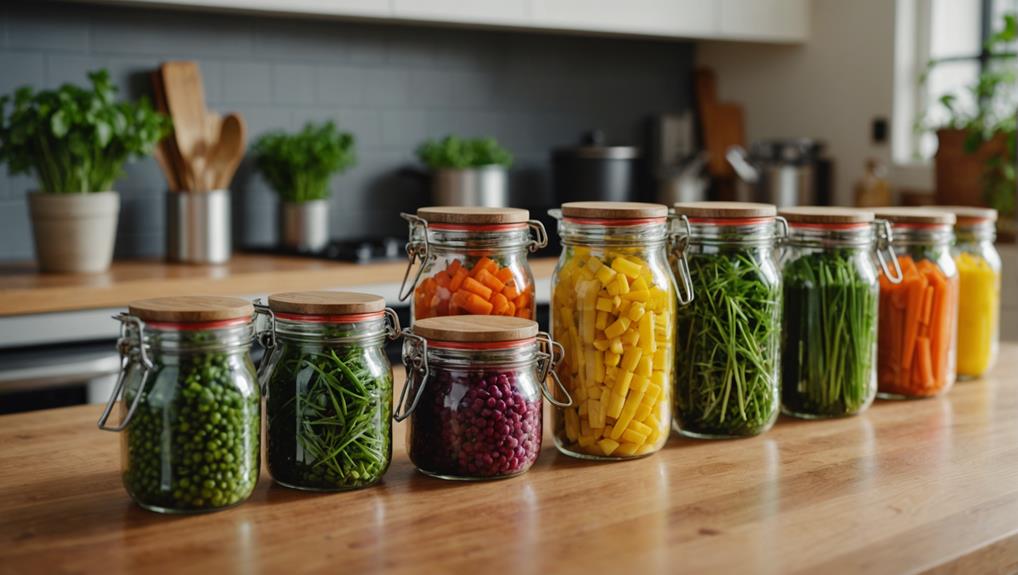
Effective meal prep strategies can transform the way I approach cooking, making it easier to enjoy nutritious vegan and vegetarian dishes throughout the week.
First, I plan my meals in advance, creating a detailed shopping list that includes all necessary ingredients for each dish. This guarantees I've everything on hand for efficient preparation. I always opt for glass or BPA-free containers for storage, as they help maintain freshness and make reheating hassle-free.
To achieve nutritional diversity, I incorporate a variety of vegetables and plant-based proteins into my meal prep. It's essential to meet my daily protein and micronutrient goals.
I also find it beneficial to batch similar recipes, like cooking multiple servings of quinoa or roasted vegetables at once. This not only saves time but also streamlines the entire process.
When storing chopped vegetables, I keep them separate from mixed salads. This helps prevent sogginess and guarantees maximum freshness when I assemble meals throughout the week.
Nutritional Considerations
Understanding the nutritional considerations of sous vide cooking helps me optimize the health benefits of my vegan and vegetarian meal prep. By utilizing sous vide recipes, I can preserve more nutrients in my ingredients compared to traditional cooking methods. This technique maximizes the health benefits of vegetables and plant-based proteins, guaranteeing I get the most out of my meals.
To further enhance my meal prep, I keep these key points in mind:
- Diverse Protein Sources: Incorporating a variety of legumes, nuts, and seeds in my sous vide meals guarantees I'm getting a balanced intake of essential amino acids.
- Controlled Cooking: The precise temperature control of sous vide helps prevent the loss of water-soluble vitamins, like B vitamins and vitamin C, which are often diminished with other cooking methods.
Tips for Cooking Tofu
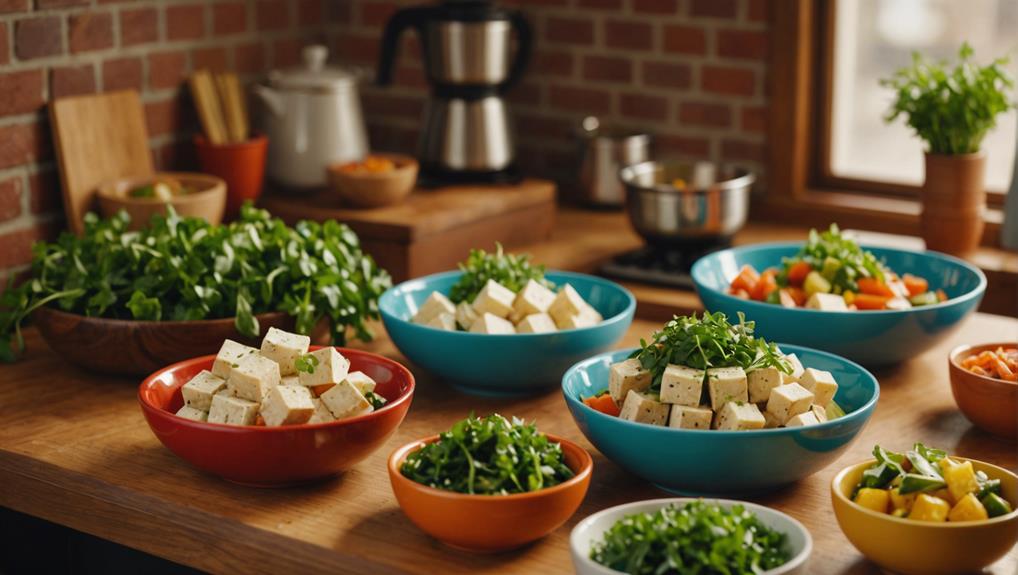
When cooking tofu sous vide, I've found that using firm varieties not only helps maintain their shape but also allows them to soak up marinades more effectively.
To start, I always drain my tofu properly. Pressing out excess moisture is essential. This step makes it easier for the seasoning to penetrate and prevents that rubbery texture we sometimes encounter.
Another tip I swear by is freezing tofu before cooking. It creates a more porous texture, which enhances flavor absorption during marination. I recommend marinating tofu for at least four hours, but overnight is ideal. This way, the flavors really infuse into every bite.
When it comes to marinades, experimenting is key. I love mixing soy sauce, garlic, and ginger for a classic flavor, but I encourage you to get creative with your combinations.
Once marinated, sous vide cooking makes the tofu incredibly tender and packed with flavor. By focusing on firm tofu, proper draining, freezing, and an overnight marinade, I've elevated my tofu game considerably.
Give these tips a try, and you'll be amazed at how delicious sous vide tofu can be!
Exploring Global Flavors
Exploring global flavors through sous vide cooking has transformed my approach to meal prep, allowing me to infuse dishes with vibrant spices and herbs from around the world.
With sous vide recipes, I can experiment with diverse ingredients that deliver exceptional taste and presentation. The vacuum-sealing process locks in flavors, making every bite an adventure.
Here are some of my favorite global flavor inspirations:
- Moroccan spices for root vegetables: I love the warm, aromatic profile these spices bring, creating a unique twist on traditional sides.
- Vietnamese-style glazed carrots: The sweet and tangy notes elevate simple carrots into a stunning dish.
Community and Resources
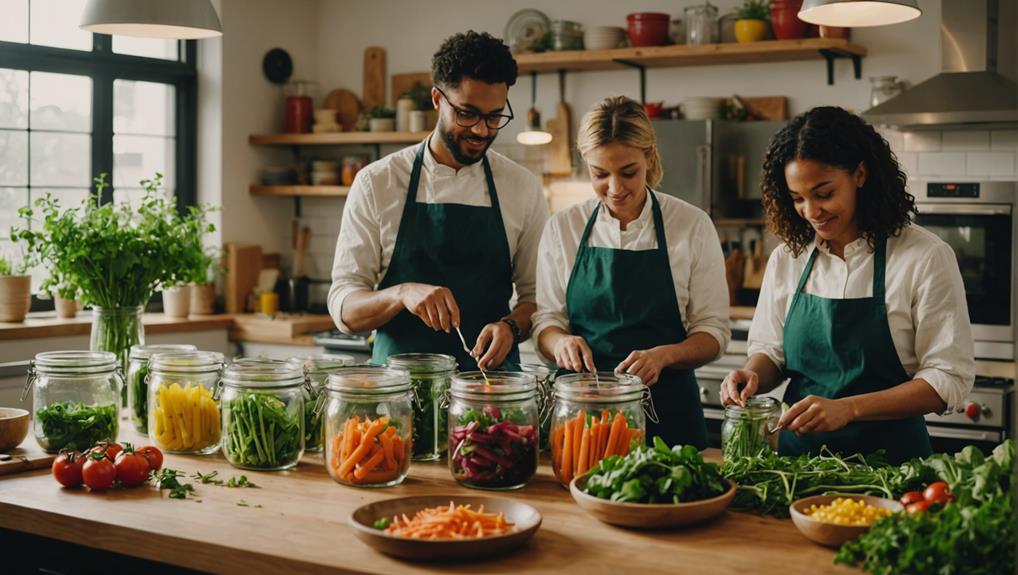
Joining online cooking communities has opened up a treasure trove of insights and support for my vegan and vegetarian sous vide meal prep. Engaging with like-minded individuals allows me to share experiences, tips, and of course, fantastic sous vide recipes. Many forums and social media groups focus specifically on plant-based cooking, which fosters vibrant discussions about unique flavor combinations and innovative techniques tailored for vegetables and plant proteins.
I've discovered numerous resources online, such as recipe websites and cooking blogs, that feature a wide variety of sous vide vegan and vegetarian recipes. These platforms make it easier to explore new dishes and meal prep ideas that fit my dietary preferences.
Additionally, I've found that joining local cooking classes or workshops enhances my skills in sous vide cooking, particularly in mastering the nuances of plant-based flavors.
Participating in meal prep challenges also motivates me to consistently explore new vegetarian sous vide recipes while building a sense of community. Sharing successes and challenges with others not only inspires creativity but also enriches my culinary journey.
With these resources at my fingertips, I'm excited to elevate my cooking experience and expand my culinary repertoire.
Frequently Asked Questions
Is Sous Vide Worth It for Vegetarians?
I believe sous vide's worth it for vegetarians. The flavor infusion it offers transforms my dishes, allowing me to experiment creatively with textures and combinations. It consistently elevates my meals, making cooking both innovative and enjoyable.
What Can I Sous Vide as a Vegetarian?
I love experimenting with sous vide as a vegetarian! I infuse flavors into firm tofu, vibrant vegetables, and even grains. The precision really elevates each dish, revealing new taste dimensions I never thought possible!
Is Sous Vide Worth It for Meal Prep?
I think sous vide's definitely worth it for meal prep. The precise temperature control and flavor infusion elevate my dishes, making them tastier while saving time. It's an innovative way to enhance my cooking experience!
Does Sous Vide Work With Vegetables?
Absolutely, sous vide works wonders with vegetables! I love how it creates a texture transformation, ensuring they're perfectly cooked. The precise temperature control really enhances flavors, making even the simplest vegetables feel gourmet and innovative.
Conclusion
To sum up, sous vide cooking offers a unique and versatile approach to meal prep for vegans and vegetarians.
By using this method, I can preserve flavors and nutrients while exploring a variety of global cuisines.
With the right equipment and recipes, meal prep becomes efficient and enjoyable.
As I experiment with different ingredients, I discover new tastes and textures, making my meals not only nutritious but also exciting.
Embracing sous vide has truly transformed my cooking experience.
